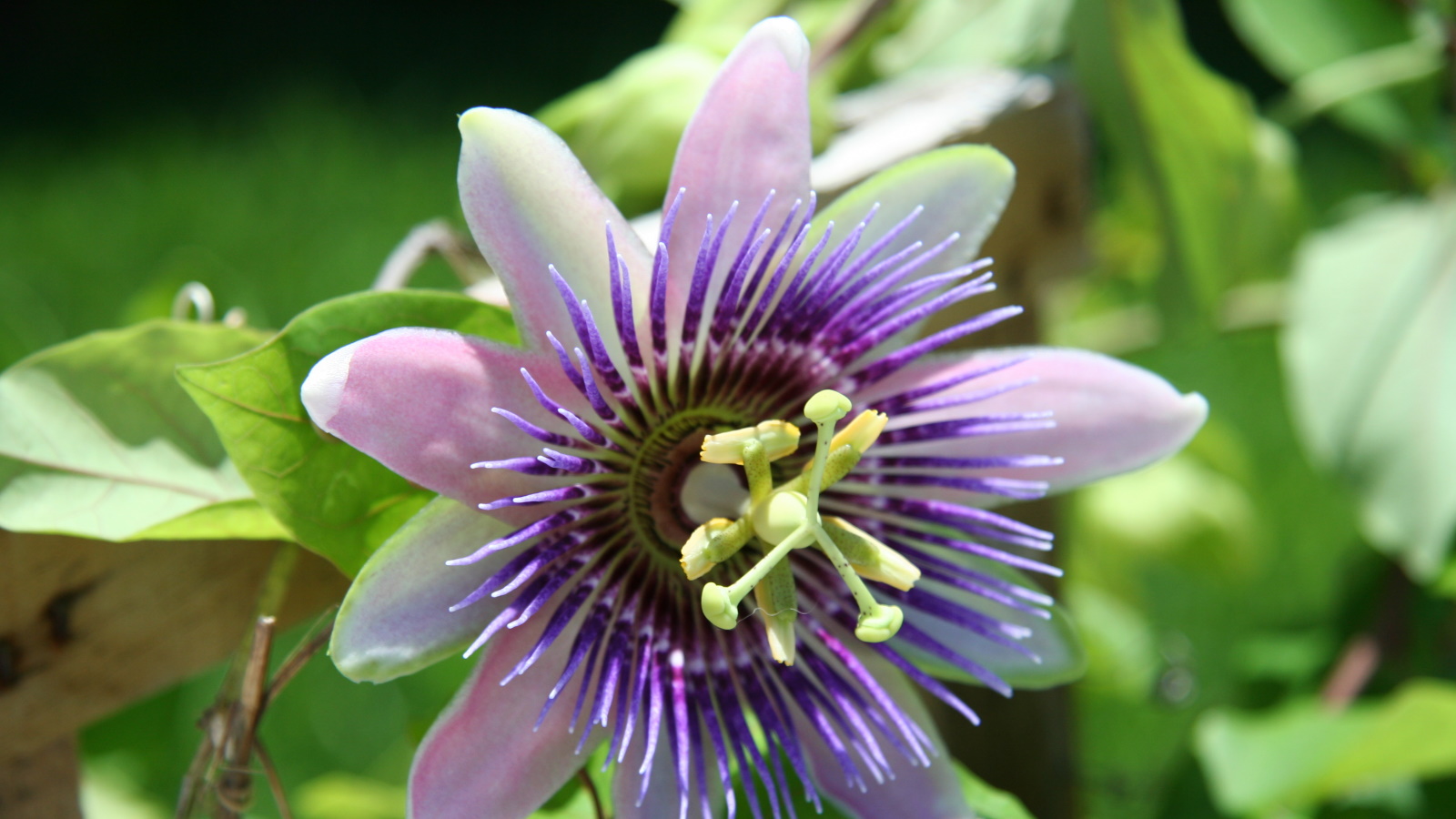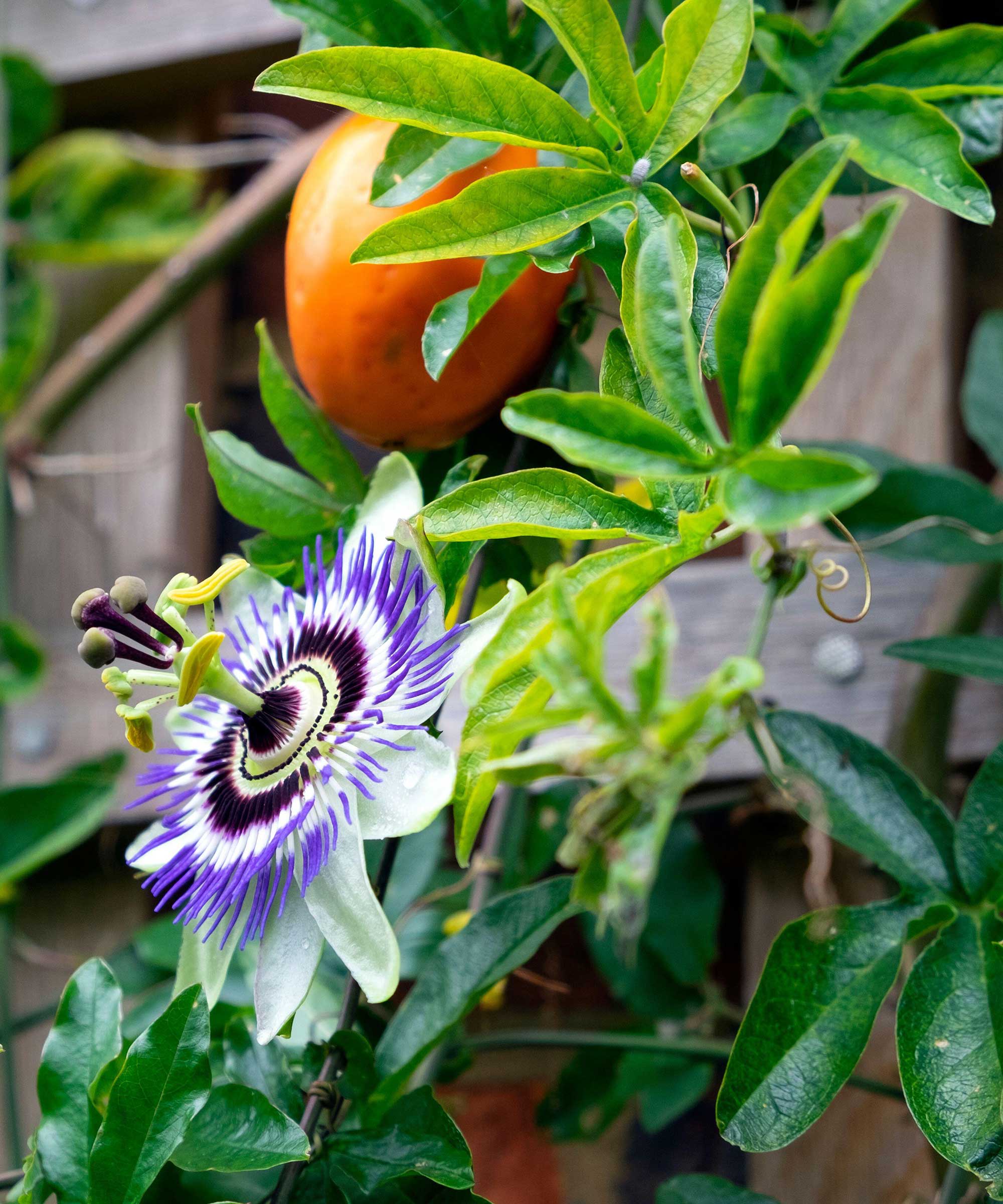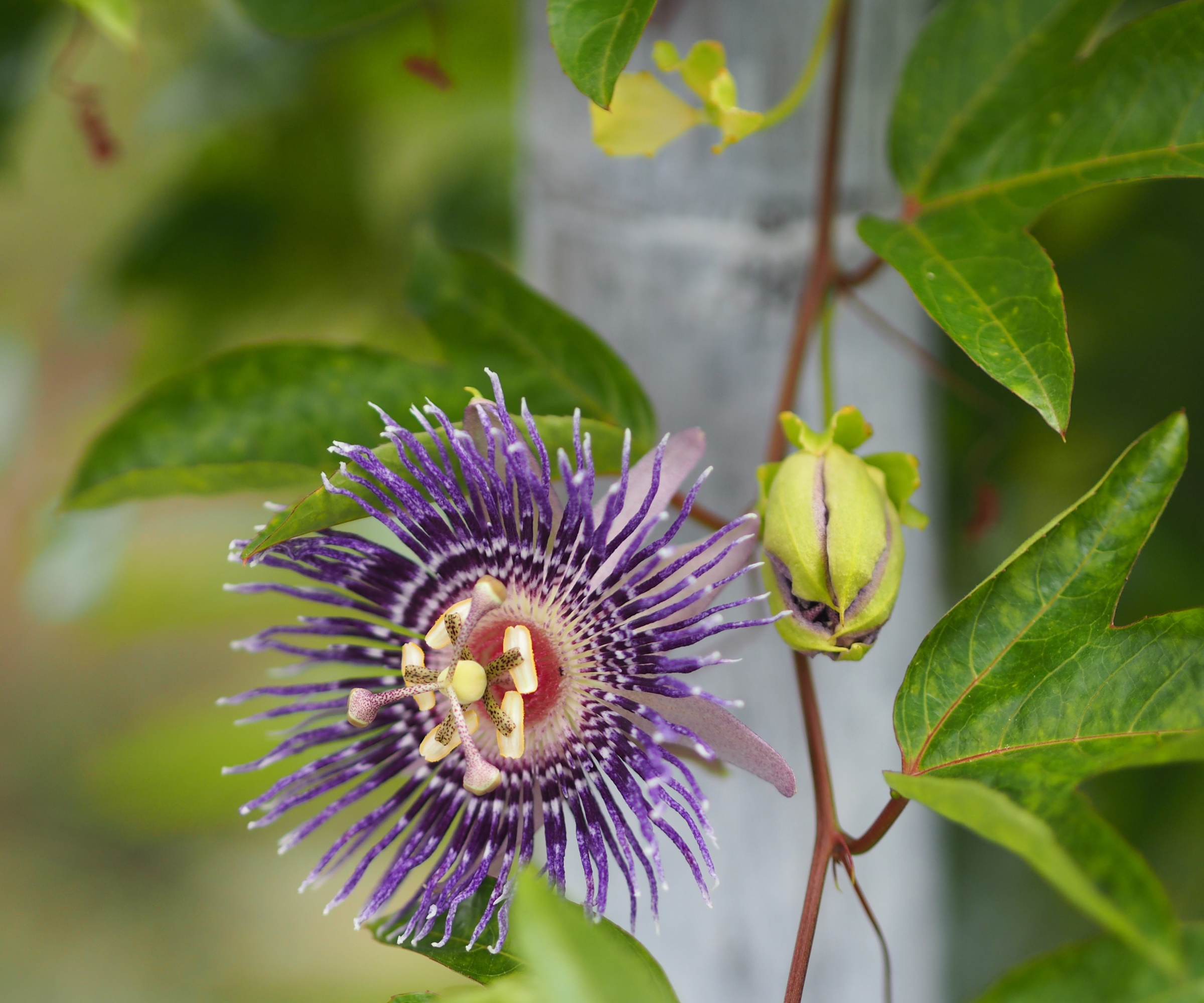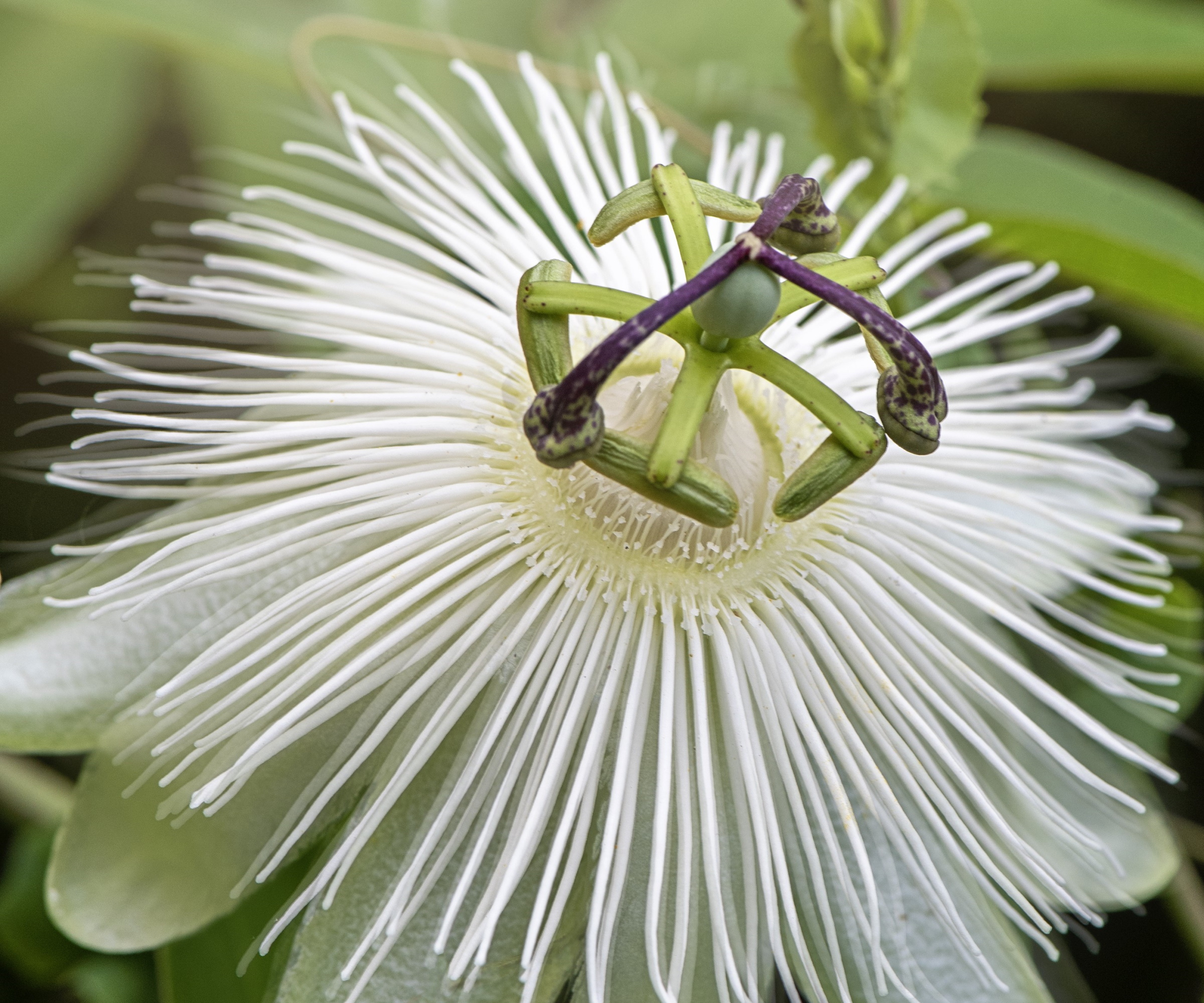
Weird and wonderful, the passion flower is a plant unlike any other. When compared to most other blooms that are common in backyards, such as roses, peonies, or hydrangeas, passion flowers seem almost alien in their appearance.
Native to tropical regions of North, Central and South America, passion flowers thrive in hot and humid, rainforest-like environments. Considered some of the best fast-growing climbing plants, there are over 600 species of passion flowers, or Passiflora, most of which are vigorous growers that produce purple, pink, blue and white blooms.
Many passion flower species are tender and best suited to growing in warmer regions or conservatories. However, there are several hardy species, including the native Passiflora caerulea that grows wild across much of the southern United States, that will thrive in cooler zones. Here, a gardening expert shares advice on how to grow passion flowers to guarantee a profusion of extraordinary blooms.

How to grow passion flowers
Passion flowers have an other-worldly appearance. These climbers produce tropical-looking blooms of incredible detail and color that are pollinated by a range of wildlife, including bees and hummingbirds. Passion flowers also have a symbiotic relationship with ants, who feed on the plant's nectar and, in return, protect the foliage from predators, such as caterpillars.
Things to know about passion flowers

'There are about 600 species of passion flower and many hundreds of hybrids,' says Myles Stewart Irvine, garden expert and passion flower breeder. 'Of the most popular decorative species, most will cope with US hardiness zone 8 and above, but there are some, including the native Passiflora incarnata that can cope down to US hardiness zone 5.
'They are vigorous climbers so will readily grow up trellises, garden wires, mesh, and bamboo canes, using their tendrils to vine and climb. While they can be pruned and kept in check, be warned, that they will grow through nearby shrubs and trees and quickly cover canopies, causing other plants to struggle,' Myles adds.
It is important to note that some passion flower species are considered invasive plants, so it is always best to check with your local municipal body to ascertain if any species are to be avoided in your region. For example, Passiflora biflora is a stunning purple species, but it is considered invasive in Florida, so always do your research before purchasing any plants from garden stores or online.
'In the right circumstances, even native species like Passiflora incarnata will throw up runners everywhere, as indeed can the common passion flower, Passiflora caerulea. Hybrids are a better option as they usually produce fewer runners and fruit,' Myles continues.
'I would recommend three of my hybrids that have bigger flowers and are hardier than most species options - Passiflora 'Betty Myles Young', Passiflora 'Damsel’s Delight' and Passiflora 'Snow Queen', but there are other good hybrids available, such as Passiflora ‘Lady Margaret’, that has striking crimson blooms.' Passiflora 'Lady Margaret' is available to order from Walmart.
Growing guide for passion flowers

- Soil: 'Most passion flowers need free draining soil,' Myles says. 'At the time of planting, it is best to incorporate some good multi-purpose compost with horticultural grit or perlite, to improve soil health and drainage.' Organic soil is available from Walmart.
- Light: Plant your passion flower in a sheltered position, ideally against a south-facing wall or fence. 'Passion flowers love full sun,' Myles adds, 'and most will bloom all the more in sunny spots.'
- Watering: Provide moisture for newly planted passion flowers, watering at least once a week in spring and summer during the first year. Once established, watering can become more infrequent, and most larger climbers will be able to fend for themselves. If you are growing tender varieties in pots indoors, be sure to water your plants during the warmer months.
- Fertilizer: 'They are greedy feeders, especially when grown in pots,' Myles continues. 'They will benefit from fertilizer in spring and summer, but avoid feeding in the fall, as growth needs to harden off. Any good general-purpose feed, either liquid or slow-release will do.' If your climbers seem reluctant to bloom, use a feed high in phosphorus, such as this tomato fertilizer from Walmart. One common fertilizing mistake that gardeners make is to use a feed that is high in nitrogen, but this will encourage foliage production at the expense of flowers.
- Pruning: Pruning is best done once a year in early spring. Passion flowers are vigorous plants, so do not be afraid to remove a few feet of old growth. Flowers are produced on new growth, so pruning old stems in the early spring will not impact this year's flowering. Pruning every year will help to keep your plants in check.
With stunning crimson blooms, this unusual passion flower is sure to attract attention from gardeners and pollinators during the summer months.
FAQs
Can I grow passion flowers in pots?
Passion flowers tend to want to spread, but can be grown and restricted in pots. This is a good idea for smaller yards or gardeners in cooler zones so that they can protect tender species in the winter months. Position pots in a sunny location and be sure to use free-draining soil with plenty of added grit or sand. It is a good idea to place canes, a trellis or an obelisk over the pot to encourage vertical growth.
Are passion flowers pest-resistant?
'Spider mites and mealy bugs can be problematic, especially if grown in greenhouses,' Myles says. 'Mealybugs can be picked off but I tend to blast them off with a hose, to remove these pests.' Neem oil, available from Walmart, is an organic treatment if your pest problem is severe.
Passion flowers are spectacular climbers to grow, and by following our guide, you too can enjoy a bounty of unusual blooms. For more climbing plant inspiration, see our guide on the best plants to hide a garden wall.







